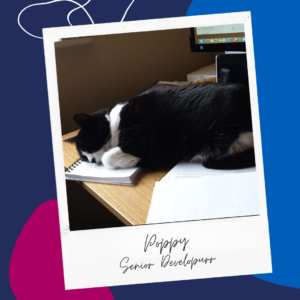What’s new at Inera and around the industry
April 2022 Newsletter
eXtyles and accessibility
 At Inera, our commitment to accessibility isn’t just about helping publishers create accessible content; we also want to ensure that our software tools meet accessibility standards for the people who use them.
At Inera, our commitment to accessibility isn’t just about helping publishers create accessible content; we also want to ensure that our software tools meet accessibility standards for the people who use them.
As part of that process, we recently commissioned a Voluntary Product Assessment Template (VPAT) evaluation, which is available on our website here. An improvement roadmap based on the VPAT is coming soon!
Edifix news roundup: Cabells & DataCite
Robin Dunford reports that with the most recent update in March, the Cabells Predatory Reports database now includes almost 16,000 titles identified as predatory or deceptive. For those keeping score, that means the database Edifix uses to flag potentially predatory citations has grown by about 2,000 titles since we launched the Cabells Reference Checking feature last year!
→ To learn more about this integration, come to the Previews session at the SSP Annual Meeting in June!
And on the data citations front, there’s even more good news: thanks to development work by Mike Dean and Igor Kleshchevich using DataCite, Edifix is now better able to identify citations to data sets in reference lists. This means more correct recognition of data citations—and fewer data citations treated as generic online references.
→ eXtyles users will also see improved performance in tagging and processing of references to data sets as a result of this work.
People of Inera: Robin Dunford
This feature will introduce you to newer Inera team members and help you get to know not-so-new team members better.
This month’s featured Ineran is one of our Senior Solution Architects, Robin Dunford, who celebrated 10 years with Inera just last month! As part of both the Development and Services teams, Robin has his fingers in many pies: “I do all kinds of things,” he says, “pretty much whatever I get asked to turn my hand to.” Over the years those things have included customer support, eXtyles configuration, and eXtyles training; coding work, including the Visual Basic portion of the eXtyles code base; and representing Inera at industry events such as the Frankfurt and London Book Fairs. (Did we mention that Robin is our one UK-based Ineran?) Since 2019, Robin has also taken on some Atypon and Wiley projects.
In this month’s newsletter, Robin answers some questions to help you get to know him a little better.
Q: What’s your favorite thing about your job at Inera?
My first response to this question was that I never know what each day is going to bring. My background is in academic research—I did a PhD and two postdoctoral posts—and one of the things I loved about that was that I never knew what I’d be doing each day, which is also something that I love about my job at Inera. But actually, my favorite thing about Inera is my colleagues. Again, something I loved about working in academia was being with a group of very bright, very enthusiastic people who just love what they do, and that’s what I’ve found at Inera as well—a great team of very bright, very intelligent people, but also very supportive, very caring, a real community (even though it’s a small team), and people who really love what they do and go out of their way to do a great job for customers.
Q: Tell us about your pets!
We just have one pet at the moment—a cat called Poppy. She’s black and white. She’s about 10 years old, so she’s about the same age as my time with Inera, actually. And she’s a real character. She’s definitely her own woman: she doesn’t take any nonsense from anybody.
She also talks! A few years ago she started saying “hello” in a really human voice. She’ll wander around the house meowing “hello” in the middle of the night, and it was quite scary the first time to wake up and think, Who is that talking? And it turned out to be the cat.
Q: What are 3 fun facts about you?
- When I was 18, I traveled around the Australian outback with a relative of my mother’s and discovered several species of plant—at least two completely new plant species.
- I did a lot of research into my family history. I now have a family tree online with over 31,000 people in it, going back to around the Norman conquest—so the 11th century—in a few places. It was a fairly all-encompassing passion for a few years, but I’m now at the stage where it’s pretty difficult to find out new things. I’ve found relatives in the United States, in Canada, in Australia and New Zealand, and all around the UK.
- My lockdown project was to look after myself physically and get fit, which included losing about 95 pounds (about 43 kilos). And I’m feeling much better for it.
Q: What superpower would you choose, if you could only have one, and why?
Again, I changed my mind about this one. I was going to say time travel, because there are so many historical events and people from history who I’d love to meet. Go see Liszt do a piano concert, things like that. But I decided, actually, on that theme, that the superpower I’d most like to have is to be a concert pianist. That, to me, is a superpower.
What we’re reading: One IAP report and two helpful columns
The recently released 125-page report “Combatting Predatory Academic Journals and Conferences” from the InterAcademy Partnership (IAP) sets out a plan for doing what it says on the tin. If you’re not quite ready to dive in, you’ll find a useful and nicely contextualized executive summary in this blog post from our friends at Cabells!
*
If you like our Word Tips, you’ll love the new “Ask Athena” column from Science Editor! This new feature tackles reader-submitted editing questions of all kinds through a scientific editing lens, like a more science-focused Chicago Style Q&A (which, it goes without saying, we also recommend).
Find Inera at upcoming conferences
► CSE 2022 Annual Meeting
Phoenix, AZ | April 30 – May 3
► JATS-Con 2022
May 3 & 4
The JATS-Con program is now available! Accessibility is at the top of the agenda, including a talk by Inera’s Joni Dames titled “An Incomplete Guide to Creating Accessible Content” (9:45 am Eastern on May 3).
► SSP 2022 Annual Meeting
Chicago, IL | June 1-3
You’ll find Inera’s Liz Blake at the always popular SSP Previews session on June 3 at 9:00 am Central.
► Balisage: The Markup Conference 2022
August 1-5
Attending one of these events? We’d love to see you—please contact us if you’d like to schedule a meeting.
Word Tips: Changing the default font in Word
ℹ️ Our Word Tips are tested on recent versions of Word for Windows. If you are using Word for Mac, which has a smaller feature set, your mileage may vary.
How do you feel about Calibri? If, like your roving reporter, you’re not a fan, good news! Once you’ve read this tip, you’ll be able to change Word’s default to whatever other font you find easiest to work with.
Here’s how!
- Open the Home>Font dialog (keyboard shortcut: Ctrl+d).
- Set up the options you want: Font, Style, Size, Color, and any other effects you care about. (Any you don’t care about, you can just ignore or leave unaltered.)
- Click Set as default (hotkey: D):

- You should now see a popup dialog asking whether you’d like to apply these default values to the current document or to all documents using the same template:

It’s up to you! Make your choice, then click OK.
You can always find more Word Tips in our newsletter archive!